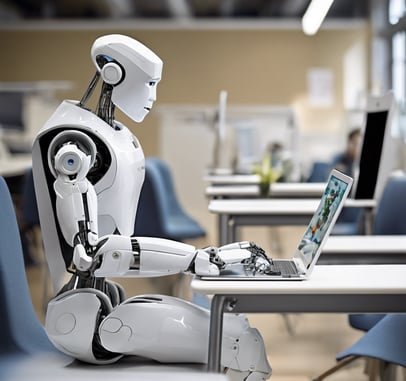A Journey Through the Evolution of Artificial Intelligence and Large Language Machine Learning Models
AI's evolution and the Large Language Model.
1/18/20243 min read


In the vast landscape of technological advancements, few domains have captured the imagination and curiosity of both scientists and the general public as much as Artificial Intelligence (AI) and Large Language Machine Learning Models (LLMLMs). From their humble beginnings to their current state, the journey of AI and LLMLMs is one of innovation, breakthroughs, and paradigm shifts that have reshaped the way we perceive and interact with technology. Let's embark on a journey through their entwined history.
The Birth of Artificial Intelligence
The concept of artificial intelligence dates back to ancient times, with myths and legends depicting artificial beings imbued with human-like qualities. However, it wasn't until the mid-20th century that AI emerged as a formal field of study. In 1956, at the Dartmouth Conference, John McCarthy coined the term "artificial intelligence" and laid the groundwork for its future development.
Early AI research focused on symbolic approaches, where systems were designed to follow explicit rules and logic. This approach led to the development of expert systems and rule-based algorithms, which were proficient in solving specific tasks but lacked the flexibility and adaptability required for more complex problems.
The Rise of Machine Learning
As computing power increased and data became more abundant, researchers began exploring new approaches to AI, leading to the rise of machine learning. Instead of relying on explicit programming, machine learning algorithms could learn from data and improve their performance over time. This marked a significant shift in AI research, opening the door to a wide range of applications, from image recognition to natural language processing.
One of the seminal moments in machine learning came in 1957 when Frank Rosenblatt introduced the perceptron, a simple algorithm capable of learning from examples. Although the perceptron had limitations, it laid the foundation for future developments in neural networks and deep learning.
The Emergence of Large Language Models
In recent years, the field of AI has witnessed a remarkable advancement with the development of Large Language Models (LLMs). These models, powered by deep learning techniques and vast amounts of data, have demonstrated unprecedented capabilities in understanding and generating human-like text.
The origins of LLMs can be traced back to early neural network research in the 1980s and 1990s. However, it wasn't until the late 2000s and early 2010s that significant breakthroughs were made, thanks to advances in hardware, algorithms, and the availability of large-scale datasets.
Transformative Impact
The introduction of LLMs such as OpenAI's GPT series and Google's BERT has had a transformative impact on various fields, including natural language processing, content generation, and human-computer interaction. These models have not only achieved state-of-the-art performance on a wide range of tasks but have also sparked new avenues of research and innovation.
Challenges and Ethical Considerations
Despite their impressive capabilities, LLMs also pose significant challenges and ethical considerations. Concerns regarding bias, misinformation, and privacy have prompted calls for greater transparency and accountability in AI research and development. Additionally, the environmental impact of training large-scale models has raised questions about sustainability and energy consumption.
The Future of AI and LLMs
As we look to the future, the possibilities and potential of AI and LLMs are boundless. From healthcare and education to entertainment and beyond, these technologies promise to reshape industries and empower individuals in ways previously unimaginable. However, realizing this vision will require continued collaboration, innovation, and a commitment to ethical principles.
In conclusion, the history of artificial intelligence and large language machine learning models is a testament to human ingenuity and the relentless pursuit of knowledge. From humble beginnings to groundbreaking achievements, the journey of AI and LLMs reflects our ongoing quest to understand and emulate the complexities of the human mind. As we stand on the brink of a new era of technological innovation, the possibilities are limited only by our imagination.
